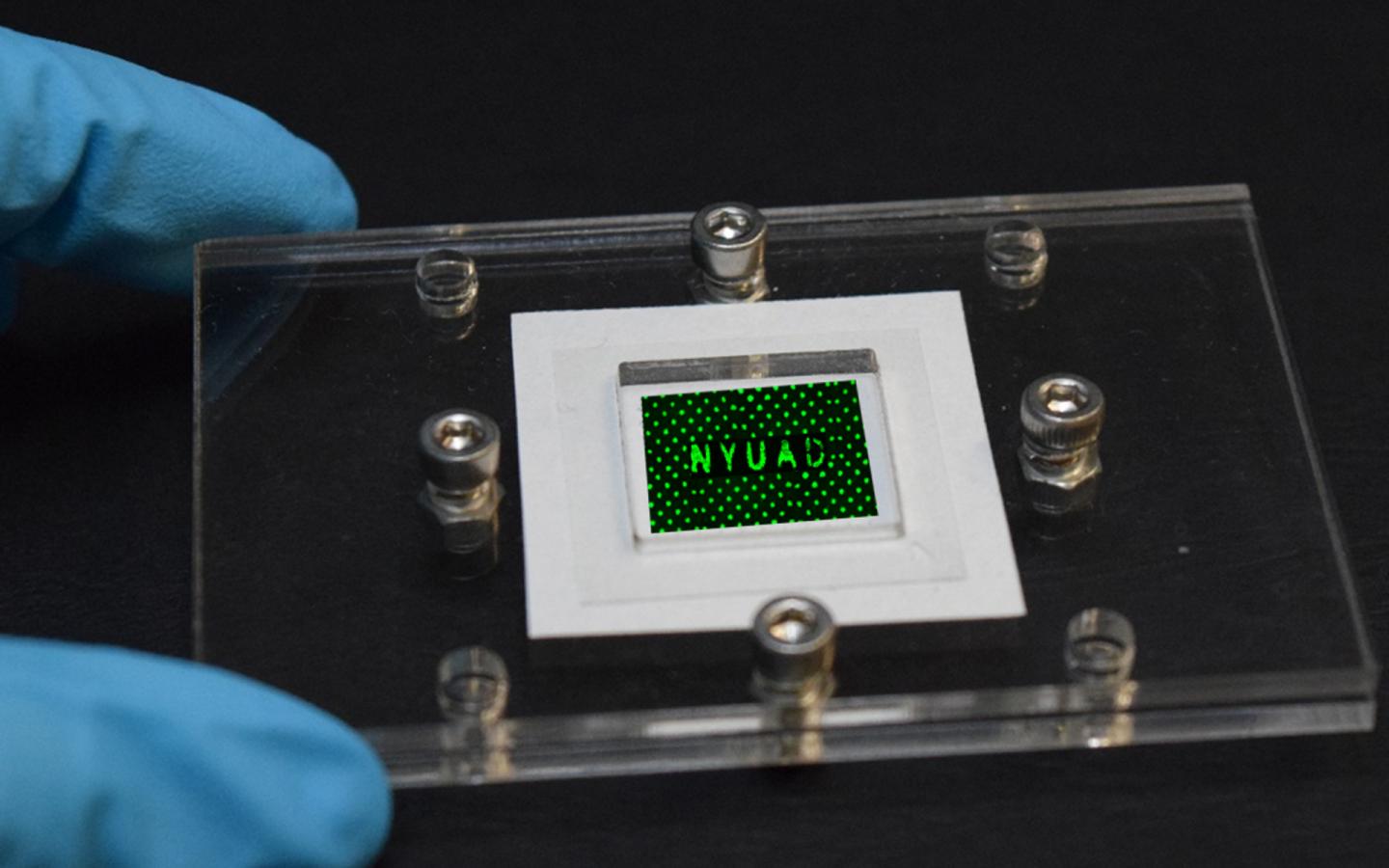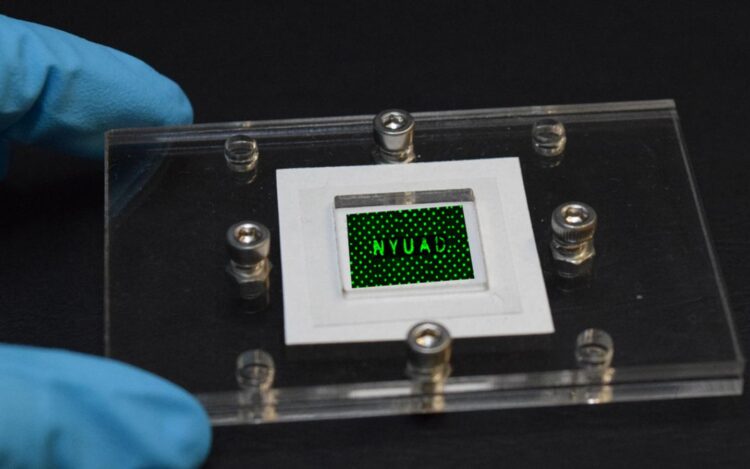New technology will help researchers predict the outcomes of drug efficacy and can guide the development of drug treatments for tumors

Credit: NYU Abu Dhabi
Abu Dhabi, UAE, February 22: By engineering common filter papers, similar to coffee filters, a team of NYU Abu Dhabi researchers have created high throughput arrays of miniaturized 3D tumor models to replicate key aspects of tumor physiology, which are absent in traditional drug testing platforms. With the new paper-based technology, the formed tumor models can be safely cryopreserved and stored for prolonged periods for on-demand drug testing use. These cryopreservable tumor models could provide the pharmaceutical industry with an easy and low cost method for investigating the outcomes of drug efficacy, potentially bolstering personalized medicine. The developed technology can be transferred to other trending therapeutic applications such as measuring tumor response to drug concentration gradients, studying cancer cell signaling pathways, and investigations of invasive tumors.
The findings were published in the paper Cryopreservable Arrays of Paper-Based 3D Tumor Models for High Throughput Drug Screening, in the flagship journal, Lab on a Chip. The findings build on the team’s earlier research engineering the paper platforms.
Led by Assistant Professor of Mechanical and Biomedical Engineering at NYUAD Mohammad A. Qasaimeh, the researchers sought to develop 3D tumor models because they offer great potential for understanding the fundamental mechanisms governing tumor responses to drug treatments, and provide opportunities to develop a number of emerging therapeutic applications. Currently, most pre-clinical drug screening is conducted on simplified two-dimensional (2D) monolayers of cell culture which do not fully represent the complexity of human tissues and organs.
Existing methods for developing 3D cell cultures and tumor models are laborious, technically challenging, time consuming, and do not allow cryopreservation for future use. This contributes to high attrition rates in the drug development process, and can cause significant delays to market and major financial losses to companies.
“Our work presents a paper patterning method for high throughput cell culture, cryopreservation, and drug testing of 3D tumor models. This technology is very promising to provide unparalleled advantages to the fields of drug discovery, tissue engineering, and personalized medicine,” said Qasaimeh, the Principal Investigator of the Laboratory and the study leader.
By testing cisplatin (a typical chemotherapeutic drug) on breast cancer 3D models generated within the developed platform, they were able to prove that their technology is capable of predicting the outcomes of drug efficacy. Breast cancer is considered the most frequently diagnosed cancer in more than 80 percent worldwide. In the USA more than 10 percent of women are reported to develop invasive breast cancer over the course of their lives, and in the UAE, breast cancer is considered the most common malignancy based on incidence and mortality.
“Our reliable, easy-to-prepare, and inexpensive method is for creating high throughput paper-based arrays of 3D tumor models that will bring us one step closer to biomimetic drug screening in the pre-clinical stages,” said Bisan Samara, the first author and a former research assistant in Qasaimeh’s lab.
This research is an advancement of the team’s earlier work, Paper-based Cell Cryopreservation, published last year in the journal Advanced Biosystems, in which they established their new technique utilizing filter paper to cryopreserve human cells, offering scientists an efficient alternative to conventional, long-term cryopreservation methods.
###
About NYU Abu Dhabi
NYU Abu Dhabi is the first comprehensive liberal arts and science campus in the Middle East to be operated abroad by a major American research university. NYU Abu Dhabi has integrated a highly-selective liberal arts, engineering and science curriculum with a world center for advanced research and scholarship enabling its students to succeed in an increasingly interdependent world and advance cooperation and progress on humanity’s shared challenges. NYU Abu Dhabi’s high-achieving students have come from more than 115 nations and speak over 115 languages. Together, NYU’s campuses in New York, Abu Dhabi, and Shanghai form the backbone of a unique global university, giving faculty and students opportunities to experience varied learning environments and immersion in other cultures at one or more of the numerous study-abroad sites NYU maintains on six continents.
Media Contact
Adam Pockriss
[email protected]





